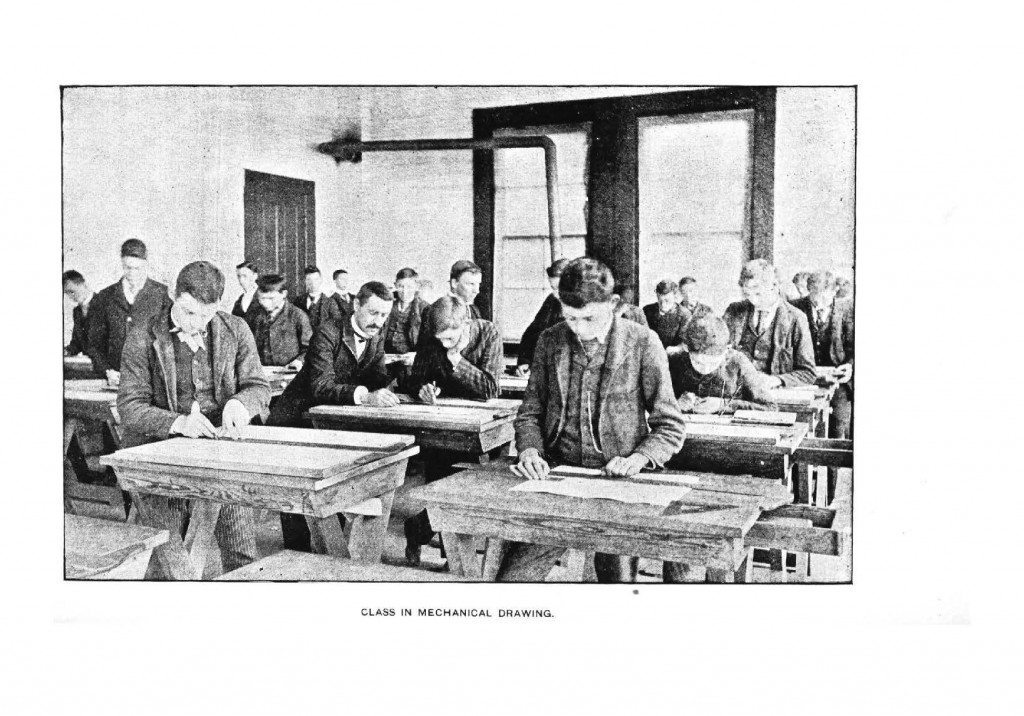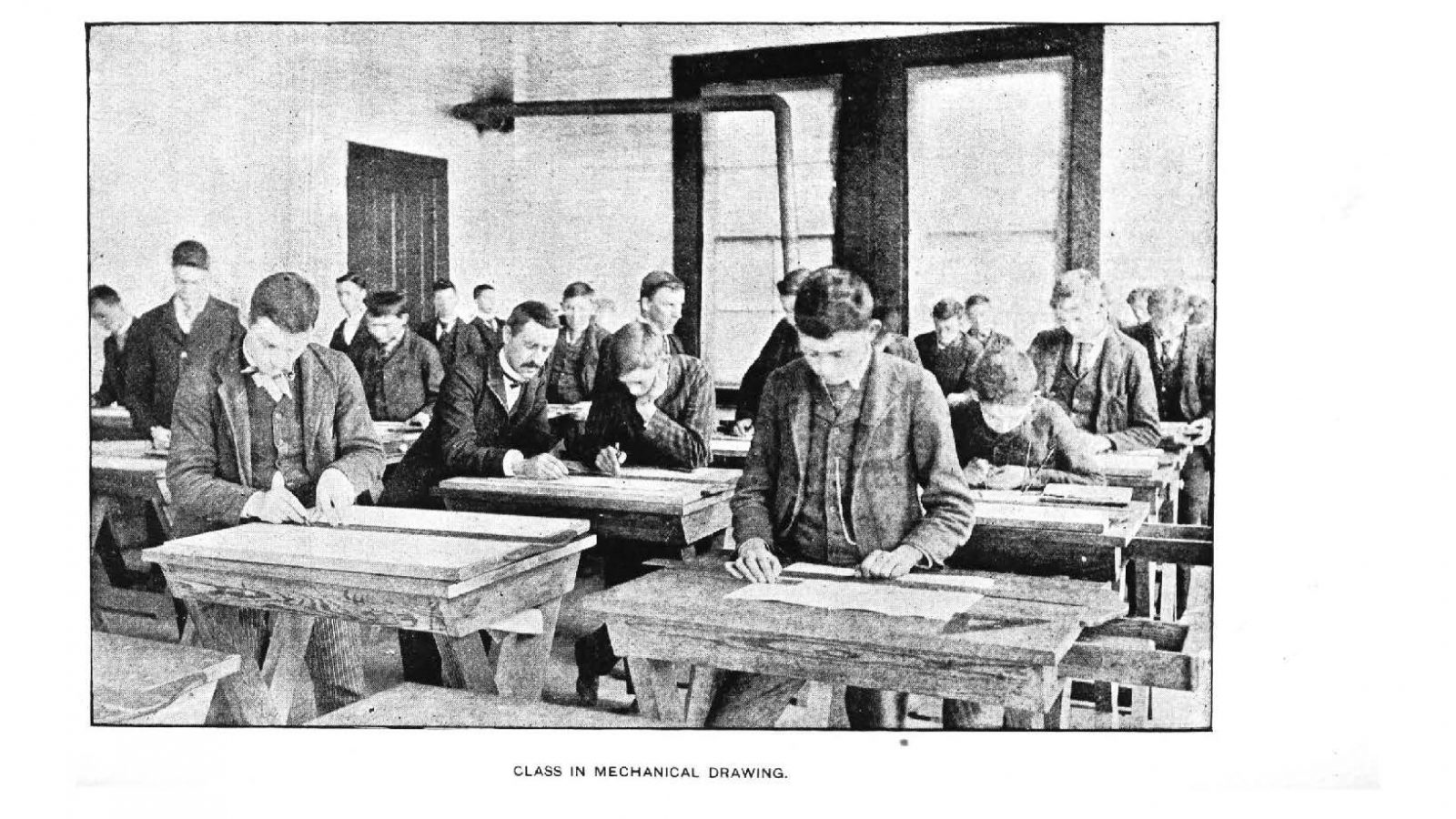This article by David Johnston is one of a series to describe the department’s history. Previous articles were presented in earlier newsletters which can be accessed at our Web site.

The North Carolina College of Agriculture and Mechanic Arts (A&M) first enrolled students on October 3, 1889. Eight A&M faculty offered two degrees: the Bachelor of Science in Agriculture and the Bachelor of Engineering. The latter including the fundamentals of civil and mechanical engineering. The 1889-1890 freshman class had 72 students. Of those, 31 returned for the sophomore year and only 19 graduated, all in the first commencement in Spring 1893. Five received the BS in Agriculture and 14 received the Bachelor of Engineering. It was not unusual at the time for individuals to seek only one or two years of college education.
From 1893 to 1899, there was only one civil engineering professor. The B.E. curriculum technical content started as a mix of civil, mechanical, and electrical engineering topics and some agriculture. Initially, the freshman year was common for all A&M students. However, gradually through the decade, the B.E. curriculum evolved, providing more opportunity for engineering specialization and no longer requiring the agriculture courses.
Starting in Fall 1899, a common engineering freshman year was in place and separate curricula were defined for civil, chemical, electrical, and mechanical engineering. Contact averaged 32 hours per week with a total of 381 quarter hours required (equivalent to 254 semester hours). The number of contact hours appears very high compared to today’s curricula; however, in addition to lectures, a significant portion of the time was devoted to completing assignments and projects in class or shops with instructor guidance rather than as homework. Courses were graded on a numerical scale of 100 with 60 being the minimum passing grade. Term, year, and overall averages weighted each course equally, regardless of contact hours.
The 1899 Civil Engineering B.E. course requirements were about 5% humanities, 8% English, 10% military science and drill, 14% mathematics and book-keeping, 14% science, 23% mechanical engineering, and 26% civil engineering. The mathematics ranged from algebra to calculus. Sciences included geography, physiology, physics, inorganic and industrial chemistry. The mechanical engineering exposure included engineering mechanics, steam engineering, and valve gears, but also trade skills such as mechanical drawing, and carpenter, forge, lathe, machine, turning and pattern shops. Civil engineering courses, many lasting multiple terms, included architecture, architecture drawing; graphical statics; surveying; railroad and municipal engineering; roofs and arches; bridge design; and hydraulics.
Post-graduate education for the degree of Civil Engineer, requiring one year of additional coursework, was first offered in 1895 and the first degree awarded in 1896. The 96 quarter hours of guided practice coursework involved advanced topics in mechanics, surveying, construction, hydraulics, sanitary engineering, road making, bridge design, and English and a thesis requiring a special design or investigation.
Course content reflected perceived educational needs of the time and practical constraints of the faculty and facility resources available. The curriculum would continue to evolve, but a recognizable foundation had been laid.

